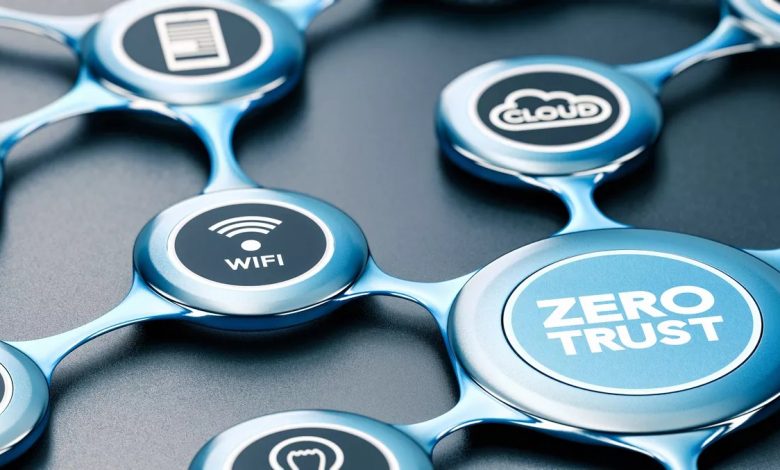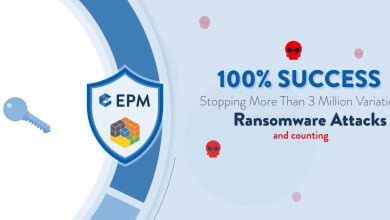Navigating the Modern Cybersecurity Landscape with Zero Trust and SSE Strategies

By Mark Ablett, Vice President, Asia Pacific and Japan, HPE Aruba Networking
The Asia-Pacific region has become a hotbed for cyber threats, with a staggering increase in attacks over the past year. The cybersecurity landscape is undergoing a dramatic transformation, and the once-impregnable castle-and-moat defences are proving inadequate in this new hybrid world. The region has been experiencing vulnerabilities in its digital ecosystem with an average of 2,510 weekly cyberattacks per organisation, marking a 23 percent increase from last year. The rise in sophistication of cyberattacks, especially AI-driven, is concerning as it bypasses traditional security measures and expands attack surfaces beyond the reach of traditional network security. In this new reality, organisations require adaptable security measures to keep pace with the changing tides. Zero Trust and SSE offer a compelling path forward for organisations to tackle the challenges of the modern digital landscape.
Additionally, the rise of remote work has shattered the walls of traditional network perimeters. Cyber threats have grown more sophisticated, employing ever-evolving tactics to bypass static defences. Rise in AI-powered attacks is the top emerging risk for enterprises, giving attackers the ability to analyse security defences in real time and dynamically adjust their tactics to evade threat detection. Companies need to evolve their security strategy to tackle the challenges of today.
Leveraging the unique power of Zero Trust Framework
At its essence, Zero Trust disrupts the traditional model of implicit trust within a network. It operates on the premise of constant verification, irrespective of a user’s location or device. This perpetual scrutiny ensures that only authorised users are granted access to the resources they require, thereby minimising the potential harm from breaches or insider threats. The surge in remote workforces amplifies the relevance of Zero Trust, as it eradicates the false sense of security provided by a physical network perimeter.
Zero Trust isn’t just a response to the remote work revolution but a powerful tool against increasingly sophisticated cyber threats. Traditional security models often rely on perimeter defences, which determine attackers can breach. Zero Trust, focusing on least privilege access and continuous verification, throws up a more robust shield. This layered approach makes it significantly harder for attackers to gain a foothold within a system.
The growing emphasis on data privacy further strengthens the case for Zero Trust. Organisations are under increasing pressure to ensure granular control over access to sensitive information. In Asia, especially, there is a rapid expansion and strong enforcement of data privacy laws with mandatory data breach reporting due to rapid digital economy growth, cross border trade, and to enhance consumer trust. Zero Trust’s principle of granting only the minimum access necessary aligns perfectly with this need. By restricting access, organisations can safeguard sensitive data, reduce the risk of unauthorised exposure and ensure compliance with data privacy regulations.
Implementing Zero Trust and SSE the right way
While Zero Trust and SSE offer substantial benefits, it’s important to recognise that their implementation is not without challenges. Organisations may grapple with legacy infrastructure that wasn’t designed with Zero Trust principles in mind. Meticulous planning and integration strategies are vital to ensure a seamless transition. Moreover, a transition to Zero Trust often necessitates a cultural shift within the organisation. Employees accustomed to more lenient access controls may resist stricter security measures. Effective communication and education are pivotal in overcoming this resistance and fostering a security-centric mindset among the workforce. Finally, striking a balance between the need for robust security and the agility required for day-to-day operations can be a delicate task. Finding this equilibrium and ensuring scalability are crucial for long-term success.
Fortunately, technology offers a powerful ally in overcoming these challenges. Artificial Intelligence (AI) and Machine Learning (ML) can significantly enhance threat detection by identifying anomalies and suspicious patterns within network traffic. This allows for swifter responses to potential security incidents, minimising possible damage. Additionally, the rise of cloud-native security solutions dovetails perfectly with the principles of SSE. By leveraging security measures built for cloud environments, organisations can achieve greater agility, scalability, and a dynamic security posture that adapts to the evolving threat landscape. Automation and orchestration can further streamline complex security processes associated with Zero Trust. By automating routine tasks and orchestrating responses to security events, organisations can reduce the risk of human error, improve operational efficiency, and ensure a more consistent and resilient security posture.
Zero Trust and SSE are more than just the latest trends in cybersecurity; they represent a strategic imperative for modern organisations. The ever-evolving threat landscape demands a proactive approach. Zero Trust and SSE offer a solution, providing the flexibility and resilience needed to navigate the complexities of today’s digital world. By embracing these strategies, cybersecurity leaders are empowered to fortify their defences, safeguard sensitive information, adapt to the dynamic nature of cyber threats and thrive in an era of continuous digital transformation and emerging threats.




